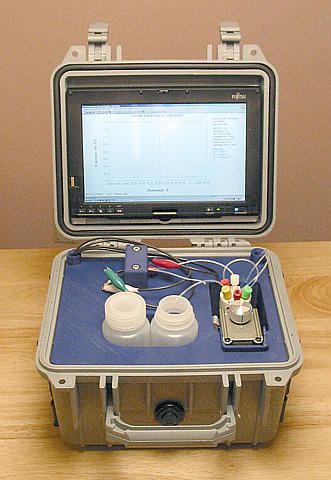-
 M32
M32
-
 Nail
Nail
-
 Viscoelasticity
Viscoelasticity
-
 Ruderal
Ruderal
-
 Australopithecus
Australopithecus
-
 Gulf Stream
Gulf Stream
-
 Flight feathers
Flight feathers
-
 S/MIME
S/MIME
-
 Glucagon
Glucagon
-
 Hall effect
Hall effect
-
 Wolframite
Wolframite
-
 Eurasian shrew
Eurasian shrew
-
 Okra
Okra
-
 Vitelline sac
Vitelline sac
-
 Driver
Driver
-
 Photolysis
Photolysis
-
 Urothelium
Urothelium
-
 ADSL
ADSL
-
 Phase
Phase
-
 VLBI
VLBI
-
 DivX
DivX
-
 Ambulacra
Ambulacra
-
 CERN
CERN
-
 Roof purlins
Roof purlins
-
 Replication
Replication
-
 Caterpillar
Caterpillar
-
 Melanoma
Melanoma
-
 European corn borer
European corn borer
-
 Colon
Colon
-
 Contrast
Contrast
Biomonitoring
Biomonitoring, or biosurveillance, is the detection of pollutants in an environment by their effects on organisms and ecosystems.
This indirect method for assessing pollution and therefore the quality of an environment, is based on a concept summed up by Tingey: "There is no better indicator for the state of a species or a system, than that species or system itself".
Principle of biomonitoring
Biomonitoring is therefore based on the use of bio-indicators (lichen, moss, insects, etc.) that provide information on the state of their environment as well as the incidence of the accumulation of pollutants on organisms and ecosystems. The space-time distribution of the organisms under study can also be controlled.
Biomonitoring techniques
Biological monitoring techniques use passive methods, based on populations of indigenous organisms, and active methods, which use the transplantation of organisms from a reference site.
For example, observing heavy metals deposits from the air in the moss of a city is a passive method. In contrast, observing the biochemical and physiological effects of tropospheric ozone on the sensitive genotypes of white clover imported from an area without ozone is an active method.
Biomonitoring man
Biomonitoring also applies to the man. In this case, studying metabolites contained in blood, urine or hair can determine the degree of exposure to certain contaminants, such as lead or lindane.
 Biomonitoring system for human blood, saliva and urine samples. © PNNL - Pacific Northwest National Laboratory CC by-nc-sa 2.0
Biomonitoring system for human blood, saliva and urine samples. © PNNL - Pacific Northwest National Laboratory CC by-nc-sa 2.0
Latest
Fill out my online form.



